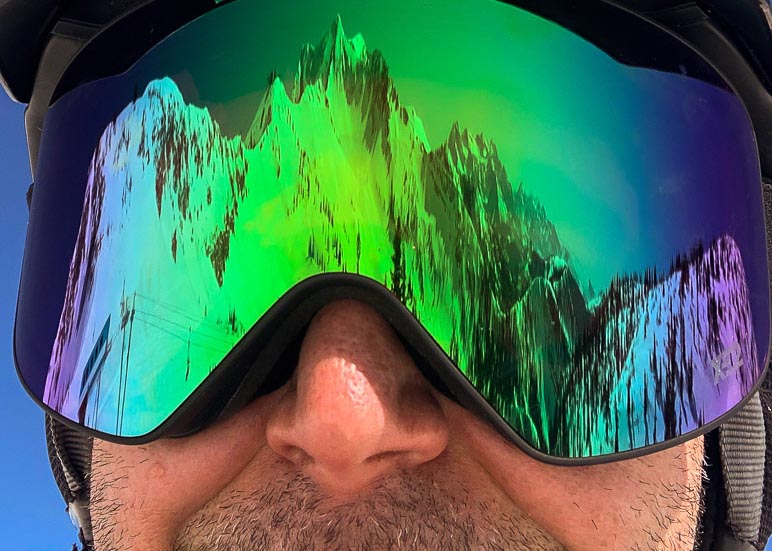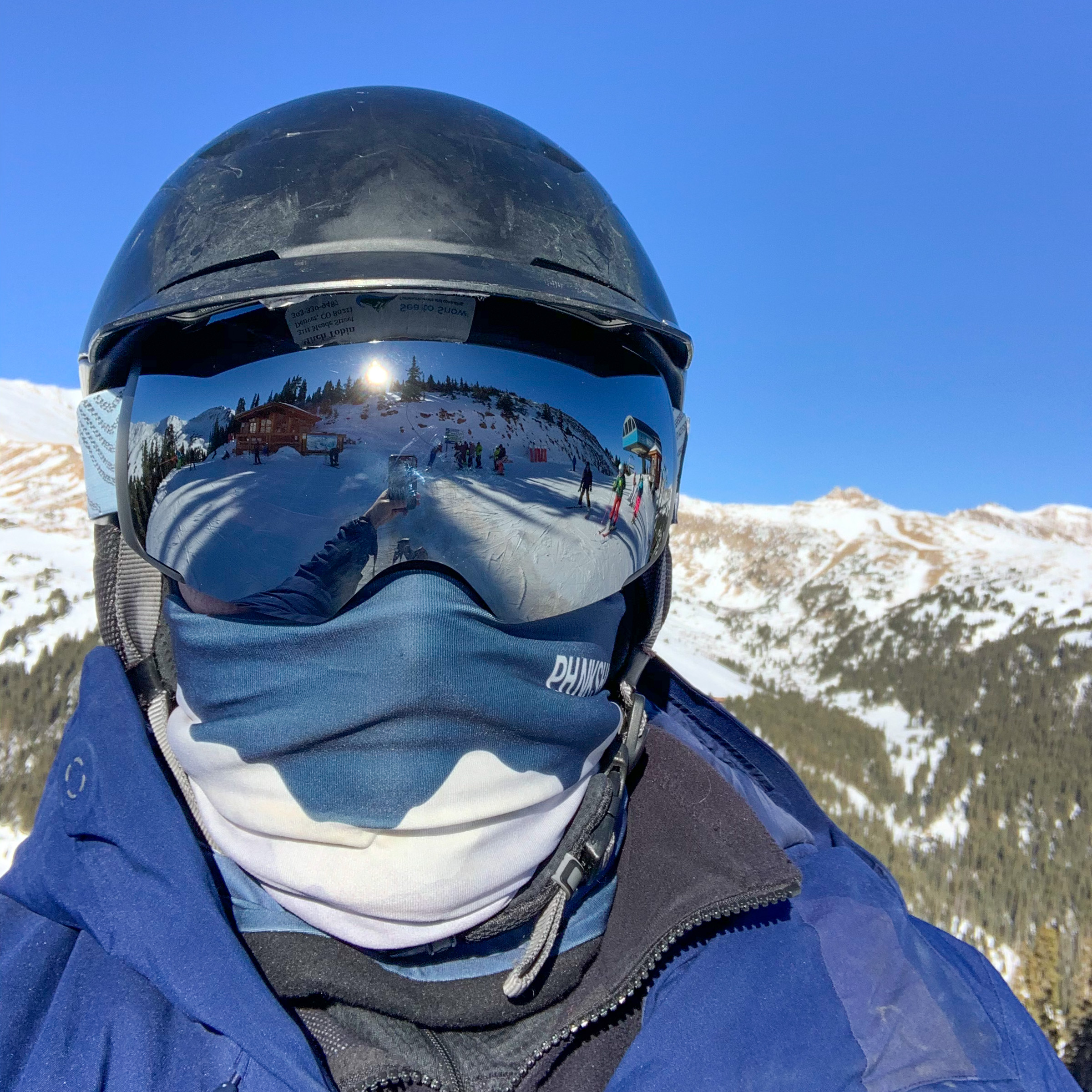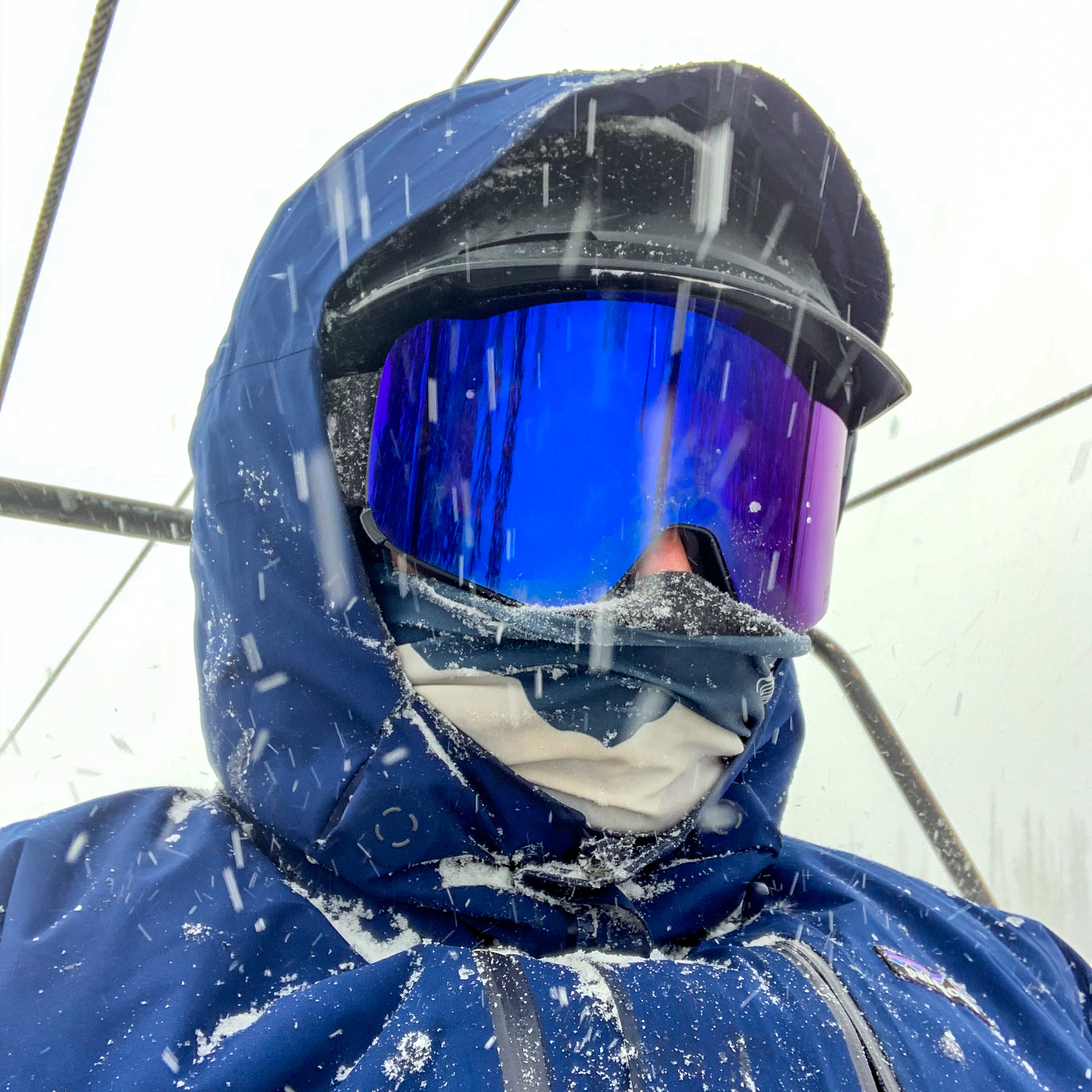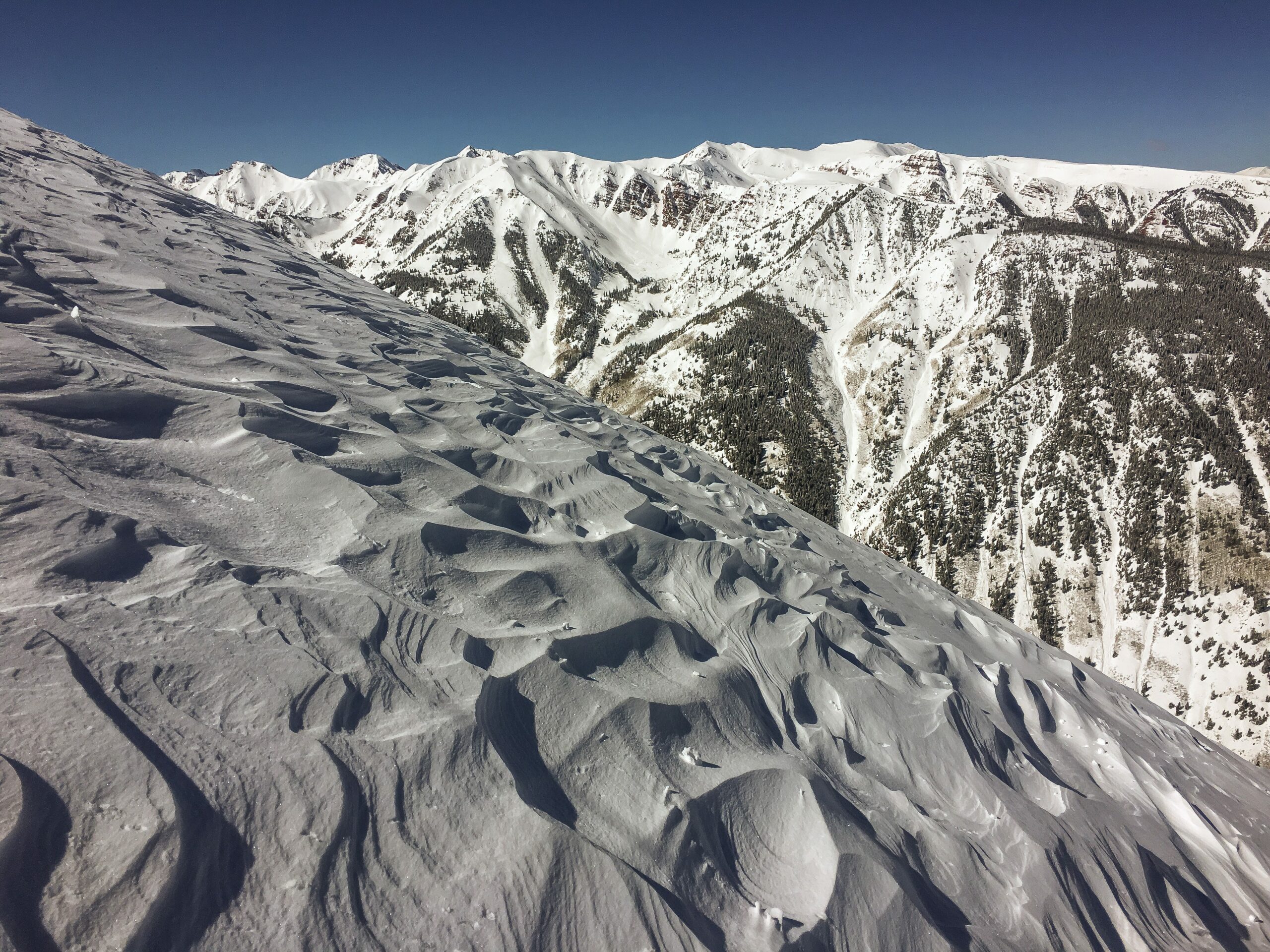
Goggles are one of the most important pieces of skiing and snowboarding gear. Without a solid pair of goggles, you could be in for a long, painful day on the slopes.
It’s certainly possible to ski without goggles and just use sunglasses. This works best in warm, sunny weather. But plenty of days are the exact opposite: cold, snowy, windy and downright miserable. Another reason to wear goggles is to protect your eyes from tree branches, face shots, and other hazards.
No matter the weather, you really should be wearing something over your eyes. Snow is very reflective, what scientists would describe as having high albedo, so if you spend too much time with ultraviolet rays hitting your unprotected eyes, even on cloudy days, you could be vulnerable to “snow blindness” or photokeratitis. UV rays are also stronger in the thinner air of high-altitude ski resorts.
Here’s a quick summary of common ski goggles terminology and technology:
Interchangeable lenses: Being able to switch out lenses can be super helpful because highly variable lighting conditions are common while skiing and snowboarding. Some newer models make it very easy to swap out lenses thanks to a magnetic attachment.
Cylindrical vs. spherical: There are two main types of goggles. Cylindrical lenses curve around your face left to right, but they’re straight in the vertical dimension. Spherical lenses are rounded, which can reduce distortion and glare while improving peripheral vision, but they’re more expensive.
Flat light: If the sun is buried behind clouds, it can be hard to make out the intricacies in the low-contrast landscape before you. Without shadows, the terrain may seem featureless in the flat light, messing with your depth perception and seeming to erase bumps or ice until gravity delivers a jolt.
Storm lenses: Many ski goggles come with lenses that are made for the blinding conditions of sunny skies reflecting off the snow. That works well in some conditions, but when it’s overcast or snowing, storm lenses are a better choice because they let more light through and can increase contrast.
Photochromic lenses: These lenses automatically adjust their tint to the ambient lighting conditions, which makes them very versatile.
Polarized lenses: This technology, which can reduce glare and eye fatigue, is also helpful as a filter on a camera lens, but it does come at a cost.
Mirrored lenses: This coating on the outside of the lens reflects light, which is great for sunny days.

Visual light transmission (VLT): This measures the amount of light that passes through a lens. For bright conditions, you’ll want a low VLT; for flat light and stormy days, a higher VLT will make it easier to see.
Gaper: This is ski slang for someone who is totally clueless. “Gape-r” makes me think of how you might gape at a klutz. “Gap-er” points to the fashion faux paux of wearing your helmet tipped up so high that there’s a noticeable forehead gap between the helmet and your goggles. For more, see Teton Gravity’s 7 Signs You Might be a Gaper and OutThereColorado’s 7 Ways to Avoid Gaperdom.
Anti-fog: There are a variety of technologies aimed at preventing your ski goggles from fogging up, which can make them practically useless. These lens coatings and venting systems normally work well, but they can be rendered useless if you wipe out and get a ton of snow inside your goggles. Many goggles feature double lenses with air in between them to reduce fogging.

What are the best goggles for skiing and snowboarding?
Skiing and snowboarding require a good deal of equipment and can get expensive quickly. I’d rate ski goggles as some of the most important gear for snow sports. You could have the best skis and boots, plus look super stylish in your new outfit, but without being able to see clearly, you’re in store for misery and possible injury.
As with boots, I think ski googles are not a place to go cheap. Make sure you find something you like, both in clear and stormy conditions. If you’re able to try on the goggles before purchasing them, that can also be helpful for assessing their fit and compatibility with your helmet.
I was excited to receive some free goggles for review from Outdoor Master and MessyWeekend. I’ve been trying out various models and can recommend them as solid choices.
For many years, I’ve also used Smith I/O 7 goggles, which also feature interchangeable lenses. They’re also designed to fit seamlessly with my Smith helmet, which reduces fogging.
Regardless of what you wear, one helpful bit of advice is to take care of your lenses, which scratch very easily. Your goggles will come with a pouch or case to protect them during off-hours, so be sure to use it, rather than just throw it in your ski bag or vehicle.
If you’re looking for some great buying guides, check out these pages from Backcountry.com, REI and Evo.


